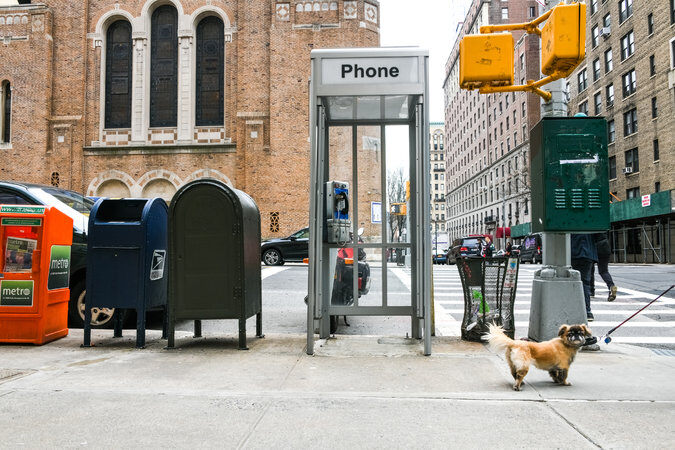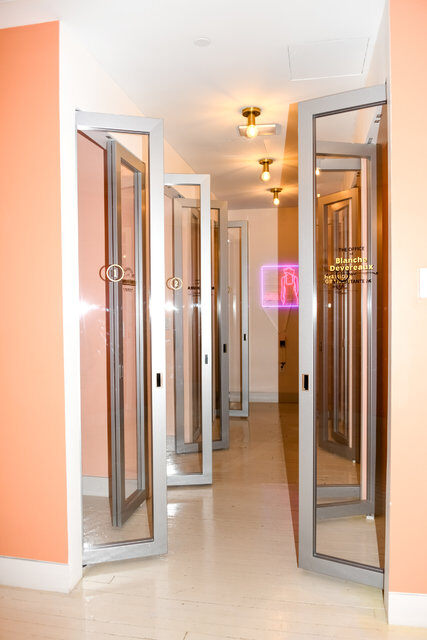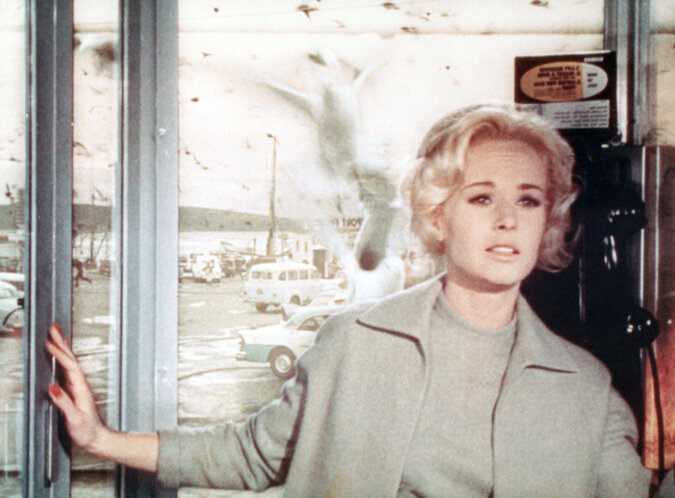Dial P for Privacy: The Phone Booth Is Back

For much of the 20th century, the phone booth was a steadfast and essential installation of modern life, from bustling cities to tumbleweed-strewn desert gas stations. Tippi Hedren was attacked in one in “The Birds,” Clark Kent frequently changed to Superman in one and Bill & Ted used one to time-travel on their excellent adventure. In “The Matrix,” a phone booth was a portal — an exit device from the digital realm.
But to lay eyes upon a phone booth now — be it the charming old jungle-green one tucked in the back of the restaurant Indochine, in the NoHo neighborhood of Manhattan, or one of the four remaining sidewalk booths on the city’s Upper West Side — is to glimpse a relic of a seemingly ancient civilization.
As mobile phone use exploded and the pay phone was increasingly linked to crime, the booth began to disappear. At the same time, workplaces saw the rise of the open floor plan. We all saw (and heard) a proliferation of mobile phones, and with it, the irritating, distracting sound of a one-sided conversation from your cubicle mate.
Lauren Emberson, then a psychology Ph.D. candidate at Cornell University, called it a “halfalogue.” As she put it in the publication Psychological Science: “I really felt like I couldn’t do anything else when someone was on a cellphone. I couldn’t read. I couldn’t even listen to my music.”

Now, the phone booth — or at least a variation of it — is making a modest comeback.
When the women-only club and work space The Wing opened its first location in the Flatiron neighborhood of Manhattan in October of 2016, the interior featured marble tables, pink velvet couches, and one small, windowless, reflective glass-doored room dubbed the Phone Booth. One year later, when another location of The Wing opened in Soho, eight built-in, glass-doored call rooms were included in the design.
Audrey Gelman, one of the founders of The Wing, explained that the increase in phone booths came “as a direct result of member feedback.”
But these aren’t grimy street cubicles or sterile, forbidding isolation chambers. “Each room is named after our favorite fictional female characters — like Ramona Quimby, Lieutenant Uhura, and Lisa Simpson — and provides members with a quiet space for private conversation,” Ms. Gelman said. Each tiny space is equipped with a power outlet, a shallow shelf, a stool and a quaint, nonfunctional — but highly Instagrammable — retro telephone. (A third location of The Wing, in Dumbo, which opened earlier this month, has four phone booths hidden behind bookshelves, Clue-style.)
Five new, maple-sided, portable, modular Zenbooth phone booths were installed late last year at the 17th Street headquarters of Gizmodo Media Group, the home of several websites, including Deadspin, Lifehacker, Jezebel and Splinter (where this reporter was previously employed).
But because approximately 230 employees work out of the GMG headquarters, the booths are frequently occupied by writers and editors looking to make a private call. Thus, the company’s facilities manager, Will Sansom, recently ordered four additional Zenbooths — including one two-seater that acts a small stand-alone meeting room — explaining that there has been “positively positive feedback across the board.”

Other companies that have recently purchased Zenbooths include Volkswagen, Lyft, Meetup and Capital One. The Berkeley, Calif., company was launched in 2016, and its products range from $3,995 (for a standard one-person booth) to $15,995 (for a two-person “executive” booth). The one-person booth is a soundproof, eco-friendly, American-made box that’s about 36 inches wide and 34 inches deep, with an insulated glass door, a ventilation fan, power outlets and a skylight — and it can be assembled in roughly an hour. (It does not, however, contain an actual phone.)
Sam Johnson, a co-founder of the company, said it produced “hundreds” of Zenbooths a month in 2017. This year, it’s on track to quadruple that production. But he doesn’t call them phone booths. “We’re manufacturing quiet spaces and privacy,” he said.
Zenbooth is not the only free-standing office phone booth in the game. Companies like Cubicall, Nomad, and TalkBox, among others, are offering up solutions to the modern office’s privacy problem.
The Cubicall, which starts at $6,495, allows businesses to customize the exterior wall with a design or logo; the Nomad, priced at $2995, is partially made from recycled plastic bottles, and TalkBox, which starts at $4,500, has whiteboard walls for writing notes and ideas on the spot and counts companies both large (Google) and small (Ipsy, the cosmetics subscription service) among its clients.
But doesn’t installing a free-standing phone booth in your company’s sleek office admit some kind of failure of planning?

Yes, says Nikil Saval, the co-editor of n+1 magazine and the author of “Cubed: A Secret History Of The Workplace.”
“There has rarely been a premium placed on privacy for American office workers,” Mr. Saval said in a phone interview, noting that while cubicles cut down on visual distractions, “you still have to deal with noise, and noise travels pretty easily. It’s an incredibly common problem in open office plans.”
Added Mr. Saval: “The clearest instance of how much of a problem it is? People put on headphones all the time. Headphones have become the new walls. It’s also a signal: Don’t disturb me. Because you’re constantly surrounded by other people, and you’re cheek to jowl, just crammed in with other people.”
Mr. Saval said surveys have shown that while workers overwhelmingly prefer private offices to open-plan arrangements or cubicles — where they are often forced to hear a co-worker make dinner reservations, check in on the babysitter or, most awkwardly, argue with a significant other — there are economic forces that take precedence. “There are no measurable benefits as far as human interaction, sociability, running into each other, serendipitous encounters,” he said of the open floor plan. “It’s just cheaper, and that’s why it exists."
Thus, the return of the phone booth signals a gesture toward more civility. Talking on the phone for others to overhear, especially in a work environment, has become at best an etiquette issue, and at worst, what Mr. Saval calls a pollutant. However small the footprint, the option for privacy is welcome.
As Ms. Gelman put it, “Sometimes you just need a minute to yourself.”
By DODAI STEWART

